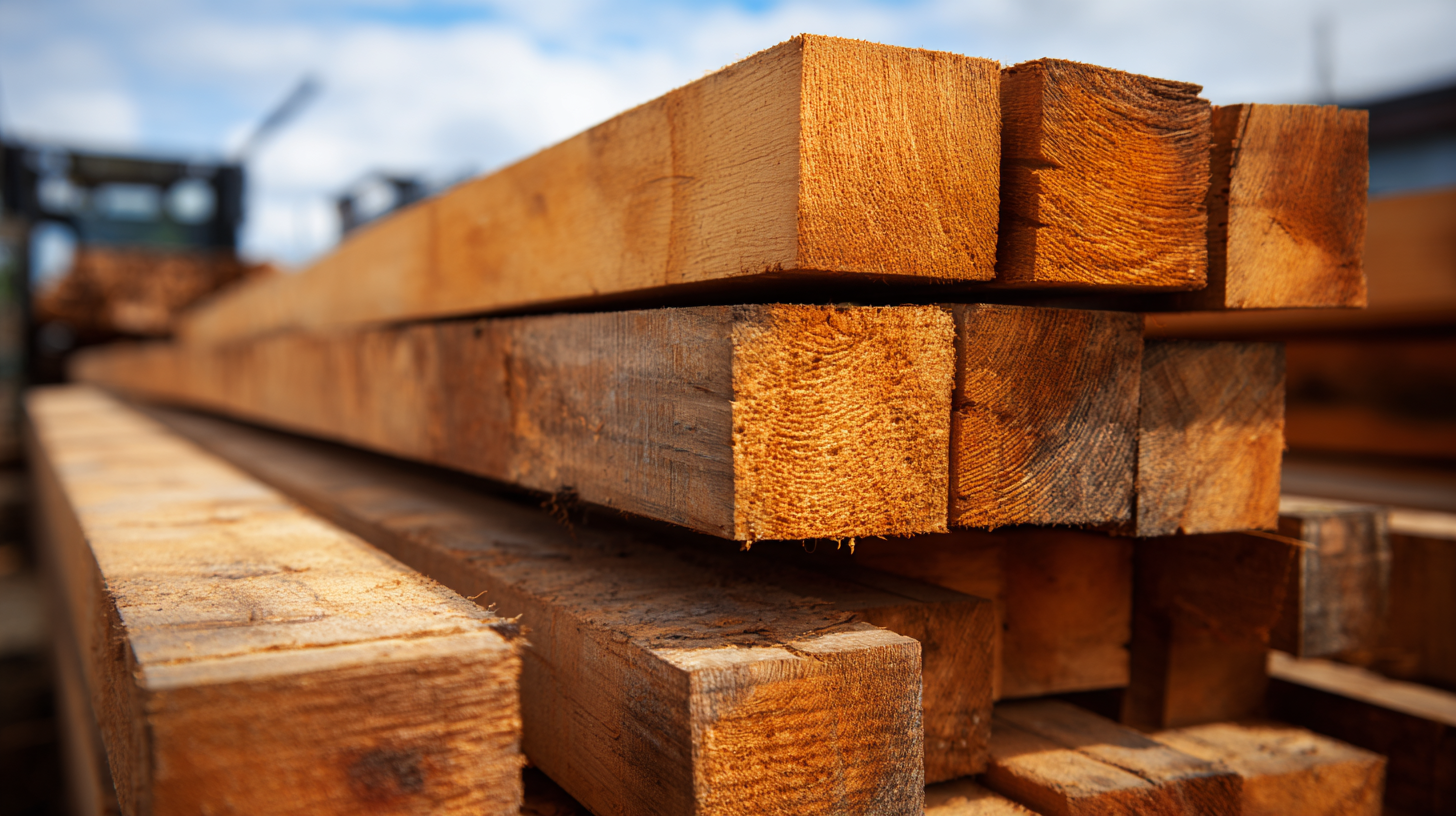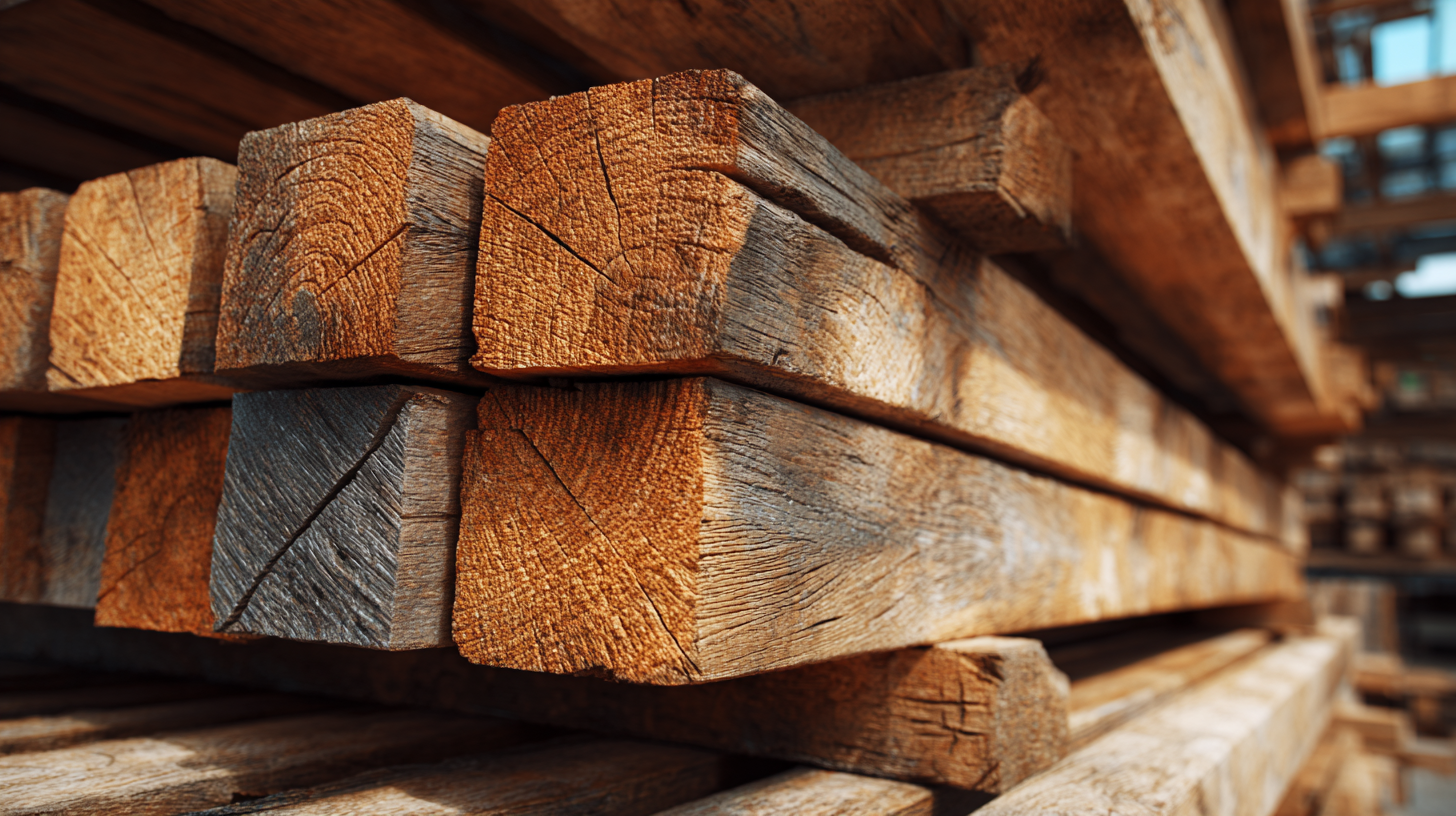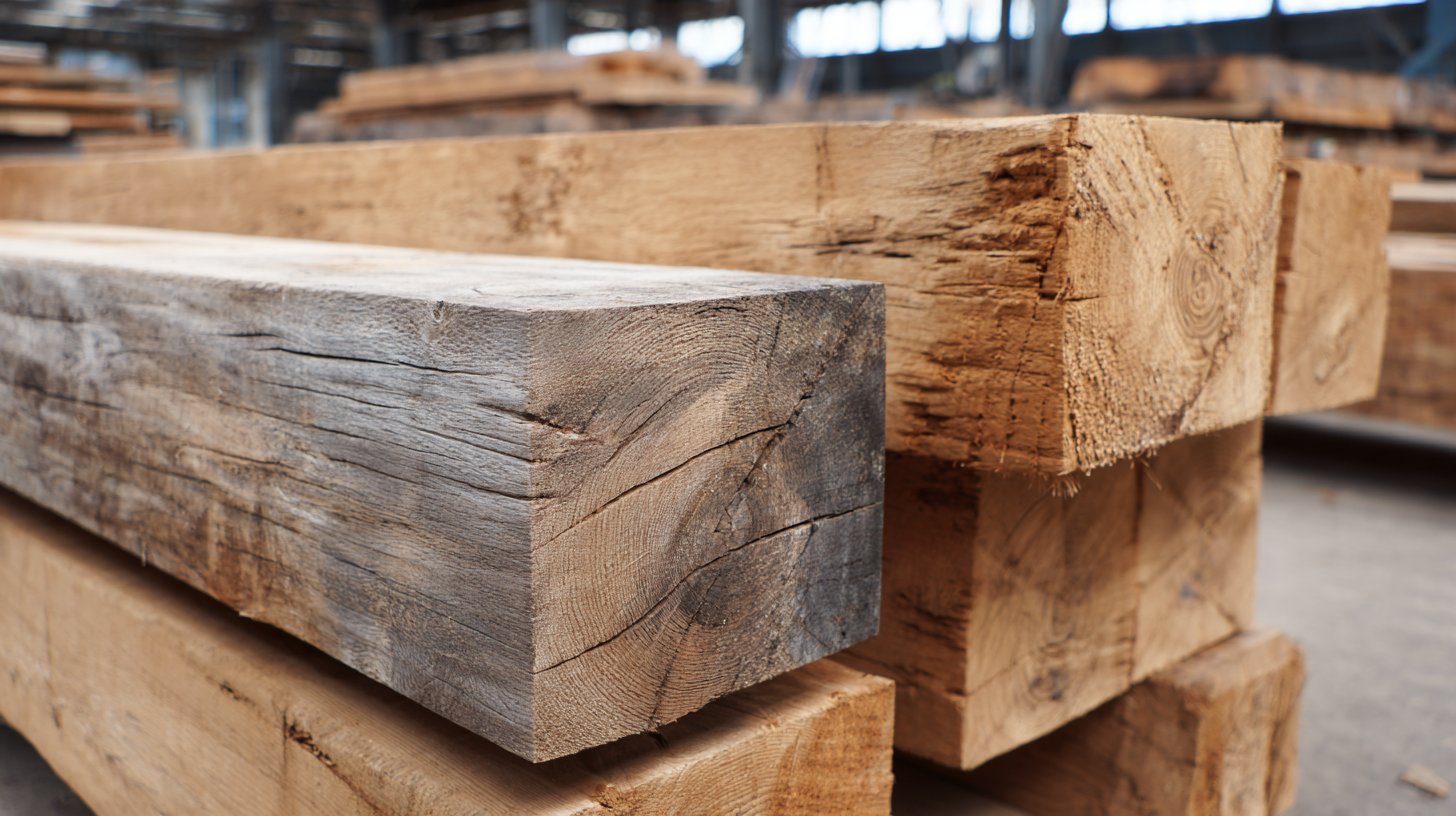Leave Your Message
-
Whatsapp
-
Whatsapp
In the world of construction and woodworking, sourcing high-quality lumber beams is essential for ensuring structural integrity and aesthetic appeal. According to a recent report by the Forest Products Laboratory, more than 80% of wooden structures rely on engineered lumber products, with lumber beams playing a critical role in their safety and durability. As demand in the global timber market continues to rise, expected to reach over $645 billion by 2027, understanding global production standards becomes increasingly crucial for industry professionals. This blog aims to equip readers with comprehensive insights on sourcing the best lumber beams by navigating the complexities of international suppliers and certifications. From identifying reliable vendors to understanding the nuances of sustainable sourcing, this ultimate guide will serve as a valuable resource for those looking to achieve excellence in their building projects.

Understanding the Importance of Global Production Standards in Lumber Sourcing
 In the lumber industry, adhering to global production standards is not just a regulatory requirement; it is a fundamental aspect that ensures quality, sustainability, and safety. According to a report by the Forest Stewardship Council (FSC), certified wood products can lead to improved market opportunities, as more consumers are now prioritizing sustainably sourced materials. These standards help mitigate risks associated with deforestation and promote responsible forestry practices, thereby safeguarding the environment for future generations.
In the lumber industry, adhering to global production standards is not just a regulatory requirement; it is a fundamental aspect that ensures quality, sustainability, and safety. According to a report by the Forest Stewardship Council (FSC), certified wood products can lead to improved market opportunities, as more consumers are now prioritizing sustainably sourced materials. These standards help mitigate risks associated with deforestation and promote responsible forestry practices, thereby safeguarding the environment for future generations.
When sourcing lumber, it is crucial to consider the certifications of your suppliers. Look for internationally recognized labels such as FSC or the Program for the Endorsement of Forest Certification (PEFC). This ensures that the wood has been sourced from responsibly managed forests, with compliance to environmental and social standards.
Tip: Always request documentation to verify certification status, as this will protect your business from potential supply chain disruptions.
In addition to environmental considerations, adhering to production standards also impacts the economic viability of lumber sourcing. A survey by the U.S. Department of Agriculture showed that businesses utilizing certified lumber can experience increased consumer trust, leading to higher customer retention rates. This is especially important in a competitive market where differentiation is key.
Tip: Engage with suppliers who demonstrate transparency in their sourcing practices and are willing to share their sustainability reports. This not only builds trust but also aligns your business with global best practices.
Understanding global production standards is crucial for sourcing high-quality lumber beams. Various international standards play a significant role in ensuring that lumber products meet necessary safety and performance requirements. The International Organization for Standardization (ISO) has established guidelines that influence lumber production practices worldwide. For instance, ISO 3349 outlines the requirements for structural timber, emphasizing strength, stability, and durability, which are essential characteristics of reliable lumber beams.

Additionally, the American Wood Council (AWC) provides the National Design Specification (NDS) for Wood Construction, which sets forth design values for different species of lumber, ensuring that the wood used is suitable for specific applications. According to the AWC, using lumber that meets these standards can enhance a structure's lifespan by up to 30% compared to non-compliant materials.
Furthermore, compliance with regional standards such as those established by the European Committee for Standardization (CEN) ensures that lumber beams not only meet performance criteria but also align with environmental regulations, promoting sustainable forestry practices. These key global standards are essential for procuring lumber beams that are both high in quality and environmentally responsible.
When selecting lumber beams, understanding the different types available can greatly influence both the quality and sustainability of your project. Reclaimed lumber, for instance, is sourced from old buildings, barns, and other structures, giving it a unique character while also minimizing waste in landfills. This option not only enhances aesthetic appeal with its weathered look but also promotes environmental responsibility by recycling materials that have already served their purpose. Builders and designers often favor reclaimed wood for its rich history and charm, making it an ideal choice for distinctive projects.
Engineered lumber represents another viable alternative, providing enhanced strength and stability. Unlike traditional solid wood beams, engineered lumber is manufactured by bonding together layers of wood fibers, which reduces the likelihood of warping and splitting over time. This makes it an ideal choice for applications requiring reliable structural integrity, such as beams in large commercial spaces. Moreover, many engineered options are produced from sustainably sourced materials, aligning with eco-friendly building standards.
Sustainable sources of lumber, including new growth forests and managed timberlands, also contribute to environmentally responsible construction. Certifications like FSC (Forest Stewardship Council) ensure that the wood is harvested in a way that maintains biodiversity and forest health. By choosing sustainable lumber, builders not only fulfill their functional requirements but also participate in the larger movement toward responsible resource management, ensuring that future generations can benefit from healthy forests.
| Lumber Type | Production Standard | Sourcing Considerations | Environmental Impact |
|---|---|---|---|
| Reclaimed Lumber | ANSI/HPVA EF, LEED Certification | Historical value, local sourcing, and verified supply chain. | Low, promotes recycling, but may contain chemicals. |
| Engineered Lumber | APA Standards for Engineered Wood Products | Factory-produced, may offer customization, consistency. | Generally low, manufactured from fast-growing species. |
| Sustainable Lumber | FSC or PEFC Certification | Select suppliers with certifications, forest management practices. | Minimal, promotes responsible forestry. |
| Traditional Lumber | Grade Standards set by ANSI and NDS | Verify local sources, regional timber practices. | Can be high, depending on sourcing and practices. |
When sourcing high-quality lumber beams, implementing effective supply chain strategies is crucial for maximizing efficiency and ensuring quality. One key approach is to establish strong relationships with reliable suppliers. Building trust with suppliers not only guarantees better pricing but also fosters open communication regarding production standards and sourcing timelines. By collaborating closely, you can ensure that your needs are met and that you receive the best materials possible.
Tip: Always conduct thorough research on potential suppliers. Look for reviews and certifications that indicate their compliance with global production standards. Regular audits and visits can also help maintain transparency and assure you of the quality of the lumber you are purchasing.
Another effective strategy involves leveraging technology for inventory management and logistics. Utilizing software solutions can streamline the procurement process, allowing for better tracking of orders and efficient management of stock levels. This not only reduces lead times but also minimizes waste and associated costs.
Tip: Invest in an integrated supply chain management system that provides real-time data analytics. This will empower you to make informed decisions quickly and enhance your ability to respond to market demands.
When sourcing lumber beams, it's crucial to evaluate the environmental and economic impacts of alternative sourcing methods. Sustainable sourcing not only reduces the deforestation rate but also supports local economies. For professionals in the construction and woodworking industries, understanding these implications can inform better decisions about material procurement.
Tip: Consider opting for certified wood products, such as those bearing the Forest Stewardship Council (FSC) label. These certifications ensure that the wood is sourced from responsibly managed forests that provide environmental, social, and economic benefits. Additionally, explore local suppliers who may offer reclaimed or salvaged wood, which minimizes the demand for new lumber while preserving the essence of traditional construction methods.
Another effective strategy is to embrace innovative materials that mimic the properties of lumber while being less resource-intensive. Engineered wood products, for instance, use less virgin timber and often come from sustainable forestry operations. This not only maintains the structural integrity needed for beams but also reduces pressure on natural resources.
Tip: Assess the lifecycle of the products you choose. By evaluating their long-term benefits and environmental footprints, you can secure a more sustainable and economically viable supply chain in the lumber industry.
